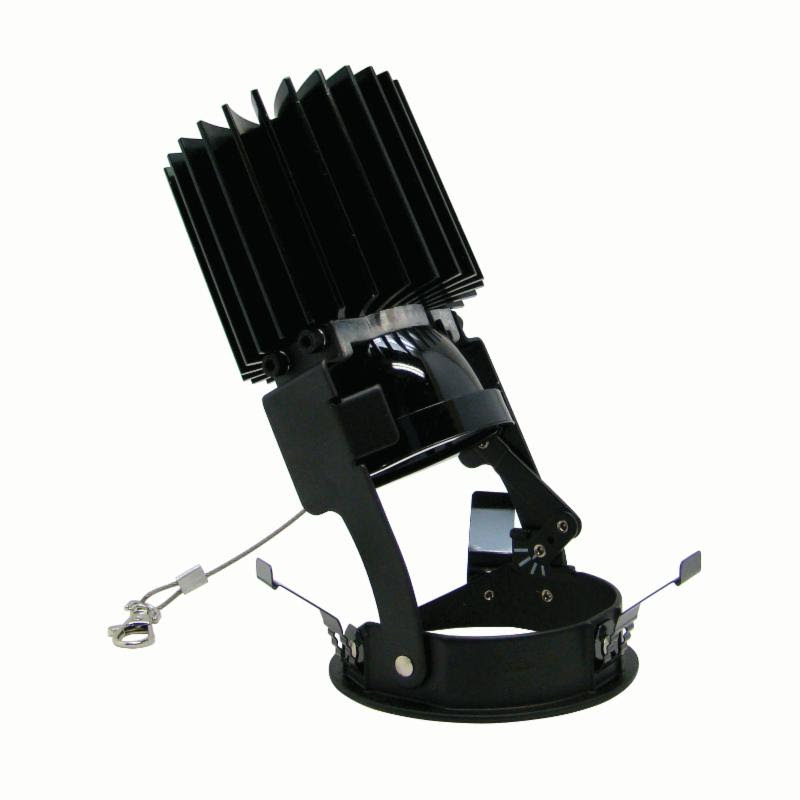Precise Indoor Positioning creates connected shopping experience
ATLANTA – May 4, 2015 – Retailers eager to more effectively communicate with in-store
shoppers can now use LED lighting to do so, as Acuity Brands, Inc. (NYSE: AYI) today announced
the commercial availability of its lighting-based ByteLight™ Services for indoor positioning.
Lighting-based indoor positioning services take advantage of LED lighting as a vehicle for
embedded technology that can assist in the delivery of digital content to shoppers at a retail
location who opt into a retailer’s loyalty app. These new services support a variety of applications
that can boost customer loyalty and revenues for a retailer, while reducing operating expenses.
Acuity Brands’ new ByteLight Services are currently being piloted with several customers,
including a large, national retailer.
“Retailers are seeking better uses of technology to engage consumers at the point-of-purchase
location, and indoor positioning services are proving to be the best approach,” said Steve
Lydecker, Acuity Brands Lighting Senior Vice President of Applied Integrated Solutions. “Our
ByteLight Services, together with our LED luminaires powered by our award-winning eldoLED®
drivers, will deliver the full LED promise of quality of light and energy-savings as well as provide
retailers with the ability to connect digitally with their customers.”
The ByteLight Services for indoor positioning have allowed the addition of Bluetooth® low energy
(BLE) technology to the recently licensed capability of the Lumicast™ Visible Light
Communication (VLC) technology from Qualcomm Atheros, Inc., a subsidiary of Qualcomm
Incorporated.
“Qualcomm Atheros’ mission to deliver ubiquitous location in all environments aligns with the
services platform developed by Acuity Brands,” said Dr. Cormac Conroy, Vice President of
Product Management, Qualcomm Technologies, Inc. “Acuity has clearly demonstrated its leadership and commitment to LED-based indoor positioning solutions, and we are pleased Acuity
has incorporated the Lumicast technology in its solution.”
Retailers, Shoppers Benefit from Indoor Location-Based Services
Mobile devices are vastly popular in-store shopping tools, as over 83 percent of shoppers¹ are
using them while in the store to compare prices, look for best offers, or even search for product
ratings.
ByteLight Services help make the mobile-enabled shopping experience even more tailored, by
allowing the retailer to provide offers, product information and assistance into the hands of
shoppers based upon their location. These benefits, along with a shopper’s ability to be able to
quickly navigate to all of the items on their list, can lead to a more satisfying customer experience.
In addition to the potential for increased revenue and shopper loyalty, retailers can also benefit
from operational savings by using the Services to obtain information that allows them to optimize
staffing, efficiently replenish out-of-stock locations, and assess the impact of marketing and
merchandising strategies.
“ByteLight Services leverage our investment in eldoLED driver VLC technology which, as part of
a complete indoor positioning solution, help deliver a mobile device’s indoor location within four
inches horizontally, as well as providing the height and degree-level orientation,” said Lydecker.
“With fixture-embedded Bluetooth® low energy technology, from our recent acquisition of the
intellectual property assets of ByteLight, Inc., users with the retailer’s app can opt-in to receive
signals from beacons to accept digital content during a personalized shopping experience. And
unlike with other beacon solutions, retailers can deploy without concerns related to battery life.”
Lydecker continued, “Combining the precision of VLC with Bluetooth low energy technology and
hosted services delivers the most complete indoor positioning solution. Retail customers will want
to take full advantage of the ByteLight Services by integrating our technology into their apps and
stores, and our retail-focused Corporate Account Managers are prepared to support them during
every step of that process.”
This week in New York City, Acuity Brands is showcasing ByteLight Services with embedded VLC
and BLE technology at LIGHTFAIR® International, the world’s largest annual architectural and
commercial lighting trade show and conference, in Acuity Brands booth #1640 and eldoLED booth
#1139.
Click
here for more information on lighting-based indoor positioning services, and other Acuity
Brands lighting solutions.
¹ Survey of US Retailers’ Use of Indoor Location; Opus Research; August 2014
2 Lumicast is a trademark of Qualcomm Incorporated. All other trademarks referenced are the property of their
respective owners.
About Acuity Brands
Acuity Brands, Inc. is a North American market leader and one of the world’s leading providers of
lighting solutions for both indoor and outdoor applications. With fiscal year 2014 net sales of $2.4
billion, Acuity Brands employs approximately 7,000 associates and is headquartered in Atlanta,
Georgia with operations throughout North America, and in Europe and Asia. The Company’s
lighting solutions are sold under various brands, including Lithonia Lighting®, Holophane®,
Peerless®, Gotham®, Mark Architectural Lighting™, Winona® Lighting, Healthcare Lighting®,
Hydrel®, American Electric Lighting®, Carandini®, Antique Street Lamps™, Sunoptics®,
RELOC® Wiring Solutions, eldoLED® and Acuity Controls. For more information, visit
www.acuitybrands.com.





